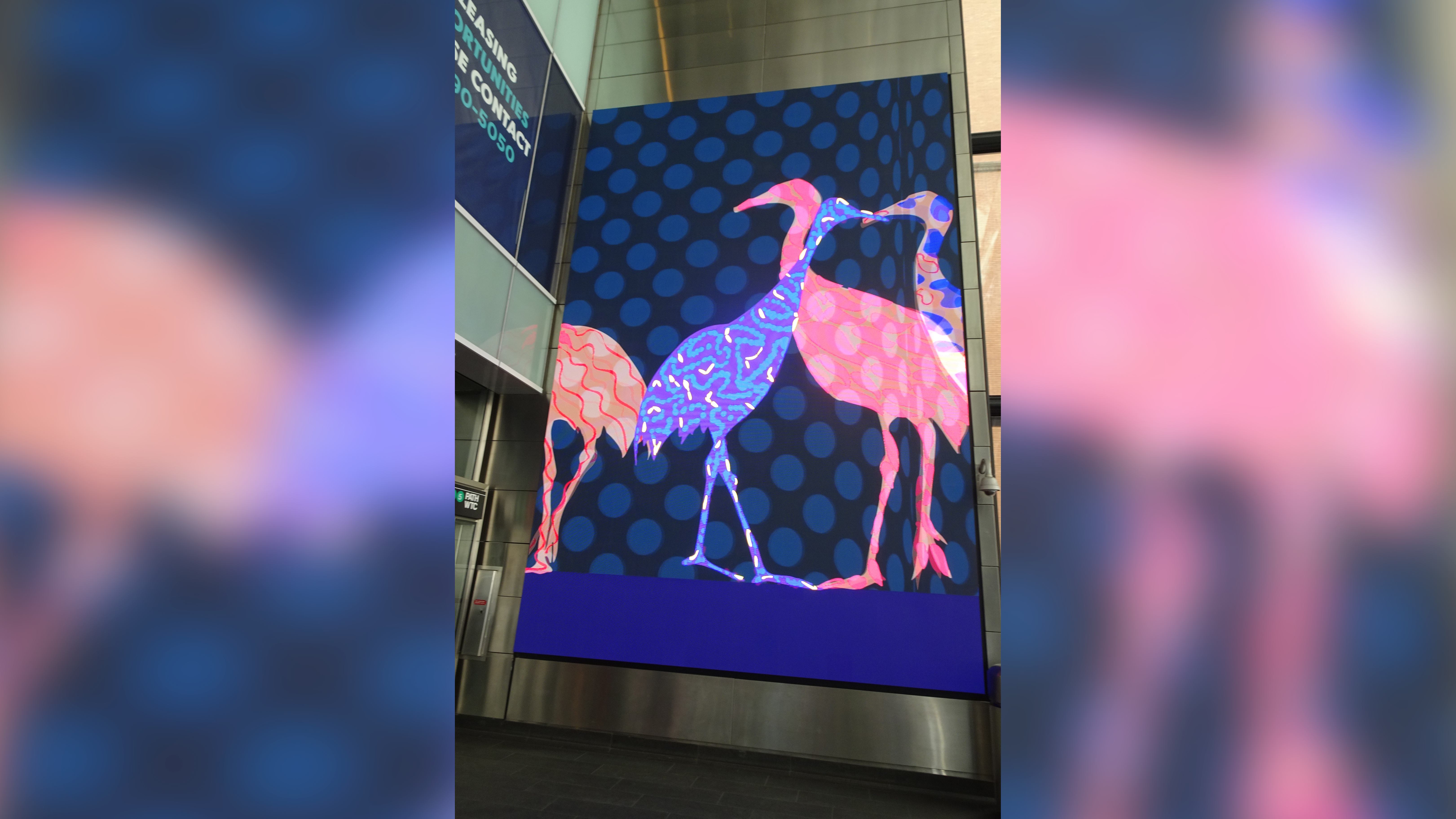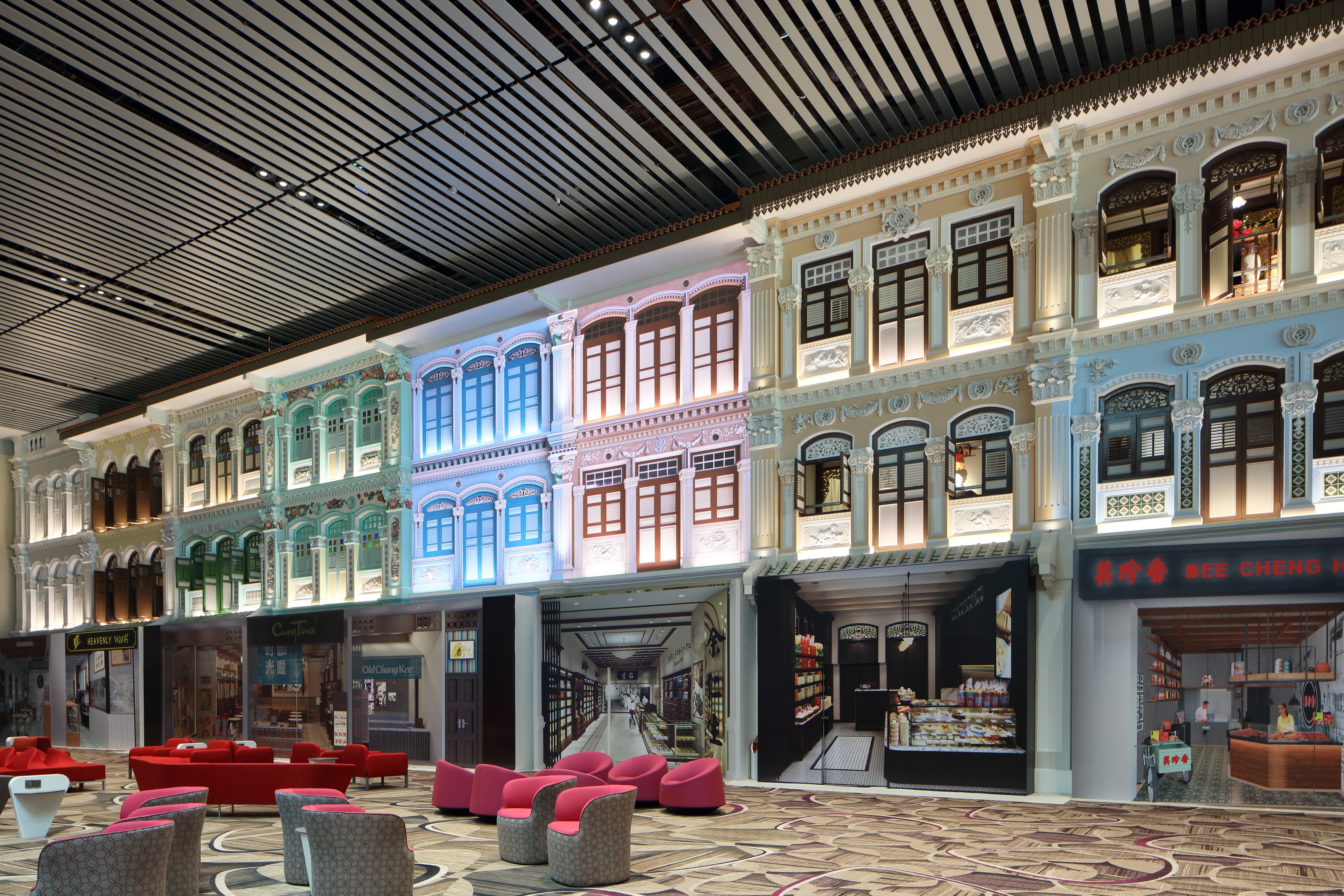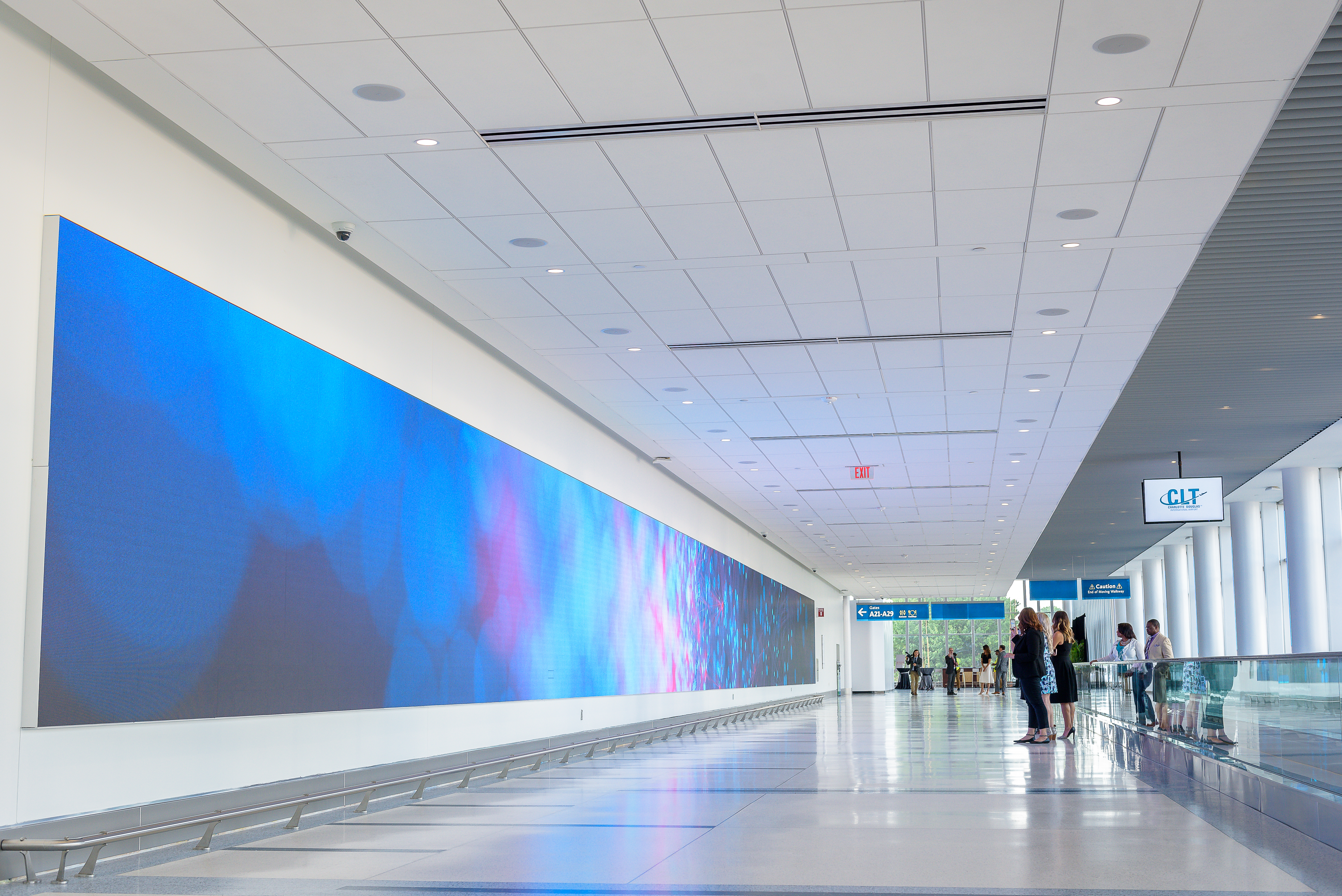The stress of travel can be palpable. Some may find it difficult to endure common experiences at transportation hubs, such as long lines for security at the airport, delays and crowding at train stations, and the small children who, understandably, melt down through it all. Though travel has gotten easier in so many ways, sometimes making it from point A to point B can give even the toughest frequent flier a headache.
For many years now, the organizations running transportation hubs have looked to technology to help improve the trips of millions of travelers. We’ve seen flip-board timetables replaced by digital displays that can provide better, up-to-the minute information, and we’ve heard how directed audio announcements can improve the sound quality of a bustling space. But more and more, those in charge of transportation spaces are finding innovative ways to calm their weary passengers through art—which is not, of course, a huge leap from what many AV installations are already doing in these spaces.
“The goal of any piece of content, whether it be for a digital signage system, print advertising, or paid media content, is to provide some form of tangible impact,” said Chris Mascatello, executive vice president, technology solutions, ANC. “Whatever is displayed is meant to entertain, whether it is memorable or fleeting to the viewer. Art can either have an emotional impact or provide a moment of distraction from what might be known traditionally as the daily commuting grind.”
The Fluid
Projects ANC has worked on recently have been seen by their fair share of commuters. As part of the Metropolitan Transportation Authority’s (MTA) Digital Arts program, which was created to engage New York City subway riders with dynamic artworks that make them pause for a moment during their commute, ANC helped Brooklyn-based interdisciplinary artist Chris Doyle’s “The Fluid” come to life. The digital artwork highlighted the rhythmic aspects of water on several different scales. Presented as a constant flow, the piece drifted between forms of representation and abstraction to mirror the tidal motion of commuters passing through Fulton Center, a busy Lower Manhattan subway hub.

The content mirroring the context was no coincidence, according to Paul J. Fleuranges, director of corporate initiatives at the MTA. “It’s important to understand that dynamic digital signage has the power to educate, inform, and engage viewers with the right content on the right screen at the right time,” he said. “Art is a content category that can also inspire viewers while taking them to a different place or time, if only for a few minutes, as they go about their regular journeys. But it also has to be contextual to the location where the art, or any content, for that matter, plays.”
The piece was displayed on a 52-channel digital signage network managed by Westfield Properties. The network synchronized 44 LCD video walls totaling more than 1,200 square feet, and eight locations of LED totaling more than 2,100 square feet. It wasn’t all art, however—to make the best use of the displays, content cycled in one- and two-minute loops, offering news feeds, sports, weather, advertising, and transit information along with the digital art.
Immersive Wall
Another example of an immersive, site-specific digital art installation can be found at Singapore Changi Airport. NanoLumens recently installed a 10-meter-wide by 6-meter-tall, 4 mm-pixel-pitch display in the departure transit area’s Heritage Zone, which is built directly into a shop house façade with several faux building fronts to show the island nation’s architectural evolution from the 1880s to the 1950s. Additionally, above Terminal 4’s centralized security screening area is a NanoLumens “Immersive Wall,” a 70-meter-wide by 5-meter-tall, 6 mm-pixel-pitch display that presents flowing, geometric waves of 3D animations, picturesque lifelike scenes from throughout Singapore, and a playful animation of the imaginary journey luggage takes after passengers check in.

“Every part of the Changi Airport points the way to the future for the entire global air transportation industry,” NanoLumens vice president of global marketing Joe Lloyd said in a statement.
Flight Paths
It’s true that airports seem to be leading the way in creative digital signage installations. Another recent stunner is “Flight Paths,” a public artwork at the Hartsfield-Jackson Atlanta International Airport that simulates a walk through the native Georgia forest with immersive lighting, video, projections, and sound effects. “Flight Paths” was created by artist Steve Waldeck.

Intelligent Lighting Creations in Arlington Heights, IL, was hired by SVI Themed Construction to provide all the lighting and video hardware, commissioning, and programming for the work, which occupies a 450-foot underground walkway in the country’s busiest airport. A disguise 4x4pro drives six channels of Sony laser projectors that display rain showers on the floor, two feeds of 4 mm LED walls in the ceilings, and 48 channels of ambient audio, from the pitter-pat of raindrops to Georgia bird species flying overhead.
Interconnected
Another nearby southern U.S. airport has gained a fair amount of publicity—and rightfully so—for its new display installation. The Charlotte Douglas International Airport recently completed a $200 million renovation and expansion of Concourse A, which included the installation of a 2.5 mm NanoLumens Engage Series LED display that sits inside the concourse and stretches 140 feet wide by 10 feet high; two additional 4.7 mm NanoLumens Performance Series displays in oddly shaped corners at the end of Concourse A are visible both inside and outside the airport. Using digital artist Refik Anadol’s unique “data sculptures,” the piece, titled “Interconnected,” turns the airport’s invisible patterns of data into captivating content.
“The art is telling the story of how we’re all interconnected — through our phones, through baggage check-in, through flight data,” said Frank Milesky, Southeast Area director for Cenero, the integration firm on the project. “It’s a living, breathing piece of art, and you’re sucked in. It’s very cool, a good distraction in your day.”

This installation, and the others, are more than just distractions, however. More than 44 million travelers move through Charlotte Douglas International Airport annually, and this piece of art is leaving an impression. They share photos and videos with friends, or the press stops by to cover the art opening—it all adds up to a significant bit of marketing that an integrator might not experience with a “standard” signage installation.
“Airports open new terminals all the time, throughout the world,” said Milesky. “So the response has far exceeded our expectations as a company. Every time it is shared, it’s also telling a story of art in transportation, of our airport, and of the partners involved.”